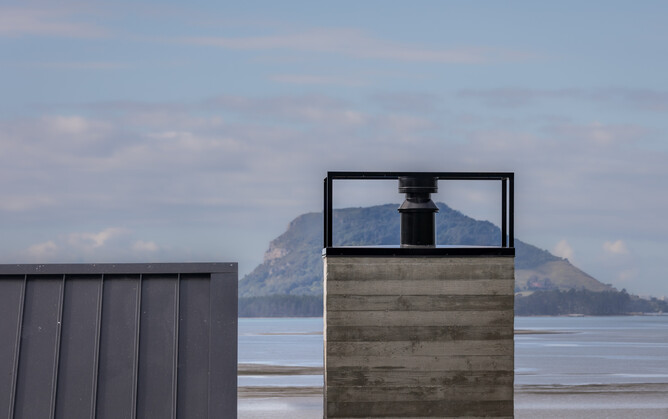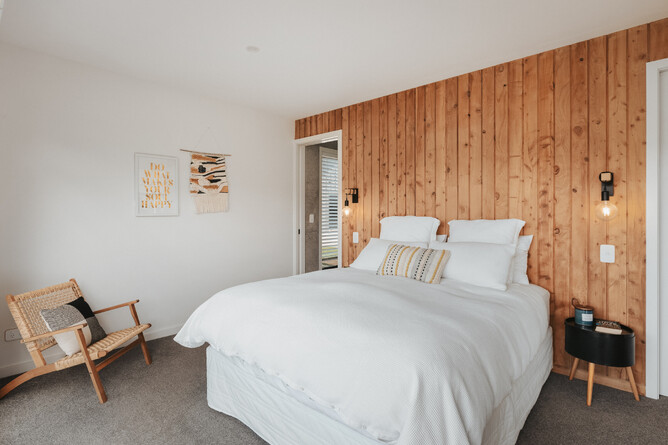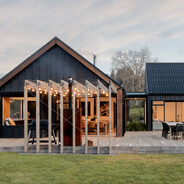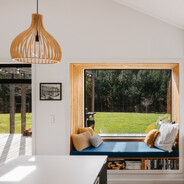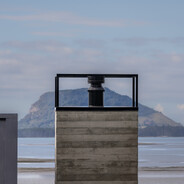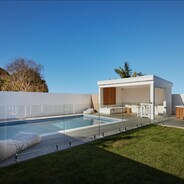When embarking on the creation of a dream home, the architectural design process is both an exciting and intricate journey. Each phase, from the initial concept to final construction, requires careful consideration, collaboration, and a focus on meeting the client’s needs. At the heart of this process is a commitment to creating spaces that are not only visually stunning but also functional, sustainable, and harmonious with their environment.
Why use an architectural designer?
Building your dream home is a significant investment, both financially and emotionally. The choices you make during the design phase will shape the look, feel, and functionality of your home for years to come. While it might be tempting to rely on pre-designed plans or attempt a DIY approach, enlisting the expertise of an architectural designer is an invaluable decision that pays dividends in creativity, efficiency, and long-term satisfaction.
The unique value of an architectural designer.
Architectural designers bring a wealth of knowledge, skill, and experience to the table, ensuring your home is not only visually appealing but also functional, sustainable, and tailored to your unique needs. To help understand this value, here are several reasons why hiring an architectural designer is worth the investment:
1. Tailored design to suit your lifestyle:
Every family is different, and a home should reflect how you live. Architectural designers excel at translating your vision into bespoke designs that align with your lifestyle, preferences, and daily routines. They consider:
Space Utilisation: Ensuring every square metre serves a purpose while maintaining a sense of openness and flow. Small intricacies like the view line into the toilet and bathroom areas from other rooms and window sizes to maximise views and light.
Future-Proofing: Designing with adaptability in mind, accommodating changes in family size or lifestyle over time. And let’s not forget about our furry friends, who are sometimes the most important considerations for families!
Personalised Features: Whether it’s a home office, a gourmet kitchen, or an outdoor entertaining area, architectural designers craft spaces that resonate with your priorities to ensure the home functions the way it needs to!
2. Creative problem-solving:
Site constraints, budget limitations, and local regulations can present challenges during the design process. At Radley Design we are adept problem-solvers who can think creatively to turn potential obstacles into opportunities. For example:
Maximising a small or irregularly shaped site with clever spatial planning is something we pride ourselves on and are very competent in taking on tricky sites or stringent covenants.
Designing homes to harmonise with challenging landscapes, such as sloping blocks or coastal environments. Quite often these types of environments come with specific resource consent conditions, so having an architectural designer that understands these are and how best to manage them can save you a lot of money from the get go.
Finding cost-effective solutions without compromising on quality or aesthetics is common practise. Architectural designers are dealing with many different suppliers and products and know what products are the best solutions to fit within a client’s budget and their vision.
3. Optimising sustainability and energy efficiency:
Sustainability is more than just a trend; it’s a necessity in modern home design. Architectural designers are well-versed in passive design principles that enhance your home’s energy efficiency and comfort. Key strategies include:
Orientation: Positioning the home to capture natural light and ventilation, reducing reliance on artificial systems.
Material Selection: Recommending eco-friendly, durable materials that minimise environmental impact.
Thermal Performance: Incorporating insulation, glazing, and shading solutions that regulate indoor temperatures naturally.
A well-designed home not only reduces your carbon footprint but also lowers utility costs, making it a smart long-term investment. Check out our blog on designing homes for New Zealand’s comfort which discusses materials and environmental considerations when designing and building homes throughout New Zealand.
4. Navigating regulations and compliance:
The process of securing council approvals and ensuring compliance with building codes can be daunting. Here at Radley Design we have designed many homes throughout New Zealand and have extensive experience navigating these requirements with councils throughout New Zealand including Auckland, Tauranga, Christchurch and Queenstown to name a few, saving you time and stress.
Throughout this process we cover the following:
Preparing detailed and accurate documentation for council submissions.
Liaising with regulatory bodies to address any concerns or queries.
Ensuring the design meets all safety, accessibility, and environmental standards.
5. Maximising property value:
A thoughtfully designed home enhances not only your quality of life but also the value of your property. Architectural designers consider factors that boost market appeal, such as:
Enhancing curb appeal with striking façades and landscaping. Smart aesthetic features that also serve a functional purpose can take can a home from a standard cookie cutter design to something unique and thoughtfully designed.
Designing layouts that offer versatility and broad appeal that not only function for the client, but will also work for future homeowners too.
Incorporating timeless design elements that withstand changing trends. Not every trend is a good one. As a designer we can often see through what is a fade and what has value, so ensuring this is will help your home stand the test of time.
Whether you plan to live in your home long-term or sell it in the future, a professionally designed house is a worthwhile asset.
6. Streamlined construction process:
One of the most significant benefits of hiring an architectural designer is the seamless transition from design to construction. Their involvement ensures:
Detailed Plans: Builders receive clear, precise instructions, reducing the risk of errors or misunderstandings.
Coordination with Contractors: Designers often collaborate with trusted builders and contractors, fostering a cohesive team environment. When all parties work well together, projects are delivered efficiently resulting in the best design outcomes!
Problem Resolution: Should any issues arise during construction, the designer’s expertise ensures swift and effective solutions. This is one area we feel strongly about…. We believe there is never a problem, just a challenge to solve which can often lead to better design solutions.
7. Aesthetic excellence:
Architectural designers are trained to balance form and function, creating homes that are as beautiful as they are practical. It’s important to pay attention to:
Proportions and Scale: Ensuring spaces feel harmonious and well-balanced.
Material Combinations: Selecting finishes and textures that complement each other. The contrast between different materials adds those extra design features that create the street appeal people long for… however getting the balance right is imperative!
Lighting Design: Harnessing both natural and artificial light to enhance the ambience and functionality of spaces. When considering window placement and electrical design, it’s super important to understand how light flows, to ensure all lighting has the best output.
The journey from concept to completion with Radley Design.
The conceptual stage: turning vision into reality.
When engaging with Radley Design, the architectural design journey begins with understanding the client’s vision and defining the project’s scope. Once the initial scope is agreed upon, the focus shifts to developing house designs and floor plans that embody this vision. This stage is crucial, as it lays the foundation for the entire project. Key considerations during this phase include:
1. Sustainable and Passive Living:
A well-designed home integrates seamlessly with its natural surroundings. By maximising the use of natural light, ventilation, and other environmental resources, the house can significantly reduce its carbon footprint. Thoughtful orientation and design ensure that the building harnesses the best of the environment, such as capturing sunlight during winter or facilitating cross-ventilation in summer.
2. Material selection:
Choosing the right materials is essential for both aesthetics and functionality. Materials must align with the project’s environmental context, the client’s preferences, and the budget. Durable and locally sourced materials often provide a balance between sustainability and cost-effectiveness, creating homes that are both beautiful and enduring.
3. Spatial house design:
Spatial efficiency is paramount in any architectural project. Floor plans are crafted to optimise space, ensuring a natural flow between areas while promoting ease of living. Whether designing a compact urban residence or a sprawling countryside retreat, the goal is to create spaces that feel open and welcoming.
4. Passive Environmental Design:
A well-designed home functions effortlessly within its environment. Passive design strategies, such as strategic window placement and thermal insulation, enhance the home’s comfort and energy efficiency. This approach reduces reliance on artificial heating and cooling systems, creating a more sustainable living environment.
5. Landscape Considerations:
The relationship between the home and its surrounding landscape is another critical element. A thoughtfully designed outdoor area not only enhances the property’s aesthetic appeal but also expands its functional space. From gardens and pergolas to pools and fencing, the integration of indoor and outdoor spaces creates a cohesive living environment.
6. Budget Considerations:
Every design decision must respect the client’s budget. This involves balancing aspirations with financial realities, ensuring that the final design is both achievable and aligned with the client’s goals.
7. Client Approval:
The final step in this phase is securing the client’s approval. The design must resonate with their lifestyle, aesthetic preferences, and practical needs. This collaborative approach ensures that the project remains client-centred at every stage.
Navigating Council Building Consents.
Once the house design and floor plans are finalised, the next major milestone is obtaining council building consent. This stage involves a detailed and methodical approach to ensure compliance with regional building codes and regulations. Our extensive experience working with councils across New Zealand including in Tauranga, Auckland, and Queenstown, enables us to navigate this process efficiently. Key aspects of this stage include:
1. Council Documentation:
Preparing comprehensive documentation is essential for a smooth consent process. This includes detailed architectural drawings, structural calculations, and any additional reports required by the council.
2. Building Consent Lodgement:
Submitting the application to the council marks the official start of the consent process. This step demands accuracy and thoroughness to avoid delays or rejections.
3. Council Liaison:
Maintaining clear communication with council officials is crucial. By fostering strong relationships and understanding their expectations, we can address queries promptly and facilitate a seamless approval process. Our in-depth knowledge of New Zealand’s building codes and regulations ensures that even the most complex designs meet compliance standards. This expertise allows us to tackle challenges proactively, keeping the project on track.
Construction Support: Bringing Designs to Life.
The final stage of the architectural journey is the construction phase. This is where the vision becomes a tangible reality. While the primary responsibility during this stage lies with the construction team, we remain actively involved to ensure the design is executed as intended. Our role includes:
1. Ongoing oversight:
Regular site visits allow us to monitor progress and address any issues that may arise. This proactive approach ensures that the project stays aligned with the original design and timeline.
2. Problem-solving:
Construction projects often encounter unexpected challenges. By staying solution-focused, we help mitigate these issues, ensuring that the project continues to run smoothly.
3. Construction collaboration:
Strong relationships with builders, contractors, and other stakeholders are essential. Clear communication and mutual respect foster a collaborative environment, ultimately contributing to the project’s success.
4. Celebrating Completion:
Once the project is complete, it’s time to celebrate. Seeing a design come to life and knowing it meets the client’s expectations is immensely rewarding. This final step marks not just the end of a project but the beginning of a new chapter for the homeowner.
The art of architectural design is about more than just creating visually stunning buildings; it’s about crafting spaces that enhance lives, harmonise with their surroundings, and reflect the individuality of those who inhabit them. Engaging an architectural designer for your residential house design transforms the process into an investment in quality, innovation, and sustainability. From tailoring designs to suit your lifestyle to navigating complex regulations and ensuring environmental responsibility, an architectural designer’s expertise elevates every aspect of your project. This collaboration ensures that your vision is not only realised but exceeds expectations, creating a home that enhances your lifestyle, reflects your personality, and stands the test of time. With our guidance, your dream home becomes a living reality.
